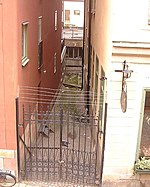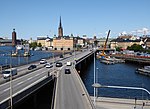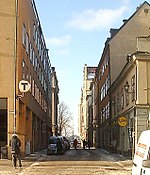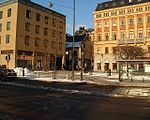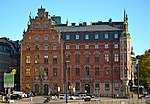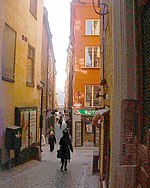Munkbroleden
Stockholm road stubsStreets in Stockholm

Munkbroleden (Swedish: "Monk's Bridge Route") is a busy street passing along the western waterfront of Gamla stan, the old town in central Stockholm, Sweden. Stretching north from Slussen to Riddarhustorget, Munkbroleden passes by three squares – Kornhamnstorg, Mälartorget, and Munkbron – while several streets and alleys from within the narrow conglomeration of the old town connects to it – Triewaldsgränd, Funckens Gränd, Lejonstedts Gränd, Tyska Brinken, Kåkbrinken and Stora Gråmunkegränd.
Excerpt from the Wikipedia article Munkbroleden (License: CC BY-SA 3.0, Authors, Images).Munkbroleden
Munkbroleden, Stockholm Gamla stan (Södermalms stadsdelsområde)
Geographical coordinates (GPS) Address External links Nearby Places Show on map
Geographical coordinates (GPS)
| Latitude | Longitude |
|---|---|
| N 59.323416666667 ° | E 18.067361111111 ° |
Address
Munkbroleden
Munkbroleden
114 27 Stockholm, Gamla stan (Södermalms stadsdelsområde)
Sweden
Open on Google Maps
